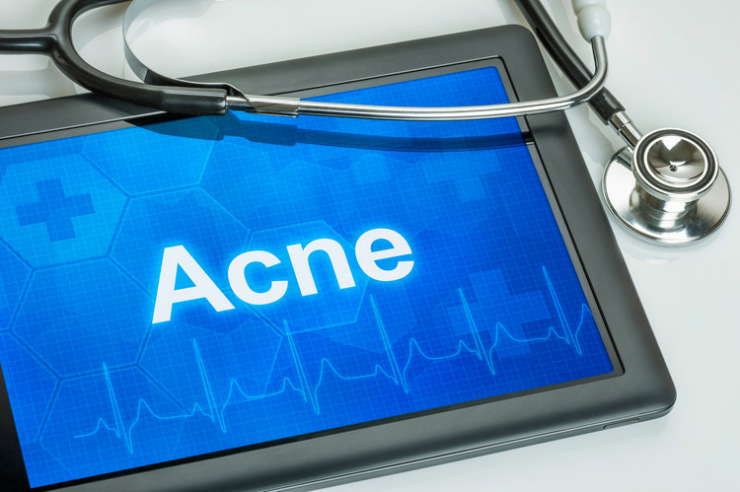Closely-held Vyome Biosciences expects to enroll the final patient next month in a proof-of-concept clinical trial of its lead molecule for drug-resistant acne, VB 1953.
“Our product has the potential to be the first bactericidal antibiotic and anti-inflammatory topical gel for acne,” Venkateswarlu Nelabhotla (N. Venkat), co-founder and CEO, says in an interview with BioTuesdays. “We are the only company globally to address the issue of antibiotic resistance for skin pathogens.”
Vyome was established in 2011 to develop novel drugs for fungus infections in the scalp, but is now focused on developing molecules for drug-resistant skin infections.
In addition to acne, Mr. Venkat says Vyome has a deep pipeline of antibiotics, known as Dual Action Rational Therapeutics (DARTs) for multiple indications and a strong pipeline of clinically proven anti-fungal products based on Molecular Replacement Therapeutics (MRT). Nine patent groups, with some 300 patent applications filed globally, cover the company’s IP.
Only four antibiotics have been approved for the treatment of inflammatory acne in the U.S., of which clindamycin-based products are the most commonly used topically.
However, one-in-three people are resistant to clindamycin. “There has been very little innovation in this space for many years, making it a major unmet medical need, with a large and growing market,” he contends.
According to Mr. Venkat, there is an unmet need and a growing market for antibiotic-resistant propionibacterium acne.
Asked what differentiates VB 1953 from approved anti-acne medications, Mr. Venkat cites the anticipated patient response rates based on preclinical models; good anti-inflammatory properties; and “given the nature of the molecule and what we’ve seen in in vitro studies, we believe the probability of resistance developing in Propionibacterium acne is very, very low.”
Acne affects 240 million people globally. Some 100 million suffer from antibiotic-resistant acne, of which more than 10 million are in the U.S. alone.
“We are looking to address a potential $2-billion market for drug-resistant acne,” he points out. In addition, the same pipeline also addresses a $1.6-billion market of implant-related infections caused by Staphlococcus epidermidis, he adds.
In preclinical and in vitro studies, he says VB 1953 demonstrated excellent efficacy against antibiotic-resistant and-sensitive strains of Propionibacterium acne.
In January, Vyome released top-line results from a two-week Phase 1 study of VB 1953. The topical gel exhibited a promising dermal safety signal; was generally well tolerated, along with very low plasma concentrations; and displayed potential early signs of efficacy, with an early reduction in acne inflammatory lesions.
“These data are encouraging for patients with moderate-to-severe acne,” Mr. Venkat says.
Also in January, Vyome began enrolling up to 180 patients in a 12-week proof-of-concept clinical study of VB 1953 and expects to complete enrollment next month, with a data read out in August this year. The double-blind, randomized study will measure three efficacy endpoints: the number of patients with two points improvement in Investigator’s Global Assessment and a reduction in inflammatory and non-inflammatory acne lesion counts.
Vyome also plans to initiate a U.S. Phase 2b efficacy trial in the fourth quarter this year.
Beyond VB 1953, Vyome is developing a new generation of antibiotics, called DARTs, which have dual mechanisms of action against skin opportunist pathogens, making them candidates against the development of future resistance.
Last December, Vyome presented two posters at the Re-Entering Antibacterial Discovery and Development Summit in Boston. One detailed how its DARTs may have the potential to bypass and/or suppress antibiotic resistance for severe infections caused by orthopedic implants stemming from Staphylococcus epidermidis.
The second poster detailed the potential of Vyome’s library of novel antibiotics for skin opportunist pathogens and their low propensity to develop antibiotic resistance.
With its understanding of functional genomics, Vyome also has developed an advanced anti-fungal platform technology, known as Molecular Replacement Therapeutics (MRT), which not only impacts enhanced fungal killing ability to a known agent, but also allows for higher retention in deeper layers of the skin.
Mr. Venkat explains that MRT represents a novel way of changing the milieu of the fungi, which in turn disrupts the fungal membrane. “This technology can significantly enhance the efficacy of anti-fungal products,” he adds.
The company has commercialized two over-the-counter anti-dandruff products based on the MRT platform: a leave-on lotion and wash-off shampoo, and is in early development of a ketoconazole emulsion gel to treat skin Seborrheic dermatitis.
The program also includes several anti-fungal creams/lotions to treat recalcitrant Tinea infections, such as ringworm, athlete’s foot and jock itch.







